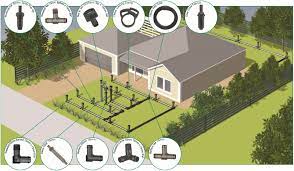Design Your Irrigation System Online with Simple, Accessible Tools
Irrigation systems are a critical component for efficient water management in agriculture, landscaping, and home gardening. Traditionally, designing an irrigation system required specialized expertise, hefty consultation fees, and often complicated processes. However, digital tools have transformed this landscape entirely. The shift to online platforms for Design Irrigation System Online has made the task simpler, faster, and more accessible than ever.
With user-friendly tools available online, individuals can now plan and build irrigation systems tailored to their unique needs. These platforms balance simplicity with advanced functionality, empowering users—from DIY enthusiasts to professional landscapers. Here’s a look at how these tools work and the key advantages they provide.
A Simpler Approach to Irrigation Planning
Online design irrigation system online tools are typically equipped with features that allow users to map out their spaces and visualize how irrigation components will work together. Most platforms follow a step-by-step process, guiding users through tasks such as measuring land dimensions, selecting irrigation types, and placing sprinklers, drip lines, or emitters.
For example, easy drag-and-drop interfaces help users map distinct areas, like flower beds, lawns, or vegetable plots. Simulated models provide real-time feedback, ensuring accurate alignment and efficient water distribution. Some advanced tools even recommend layouts based on soil type or climate data.
By removing the ambiguity and guesswork, these platforms offer a clear-cut way to plan irrigation systems—without requiring prior technical knowledge.
Benefits of Online Irrigation Design Tools
Why are so many farmers, gardeners, and landscapers turning to digital solutions for designing irrigation systems? Several factors make these tools popular.
1. Cost Savings
The traditional method of hiring professional services can be costly, with high labor fees adding up quickly. Online tools, however, are generally low-cost or even free. For small businesses or home users, this accessibility can result in significant savings on irrigation planning.
2. Customization
Online tools allow users to design systems specific to their land’s needs. Whether it’s a small urban garden or a sprawling farm, these platforms help customize irrigation plans to accommodate different plant types, water pressure requirements, and even local regulations.
3. Time Efficiency
Manually mapping out an irrigation system can be a time-consuming exercise. Leveraging software can dramatically reduce this time. Land mapping that previously took days can now be completed within hours, allowing users to focus on execution rather than planning.
4. Data-Driven Accuracy
By integrating data such as weather patterns, soil conditions, and plant characteristics, many tools increase the overall efficiency of irrigation systems. This ensures water is distributed precisely where—and when—it’s needed the most, optimizing water usage and preventing waste.
Accessible Solutions for All Users
Modern online irrigation design tools prioritize accessibility for users of all skill levels. Many platforms feature simplified interfaces that include tutorials, pre-loaded templates, and real-time error checks. Advanced users can still access more sophisticated options, such as automated zoning or pressure calculations.
While some platforms are stand-alone applications, others integrate with hardware like smart irrigation controllers, enabling seamless operation from design to execution. For individuals aiming to implement sustainable water management practices, these solutions are indispensable.
Streamline Your Irrigation System Design Today
As water conservation becomes an increasingly pressing global concern, the role of efficient irrigation systems cannot be overstated. Online tools have eliminated traditional barriers, making it possible for anyone—regardless of skill or resources—to design a system that balances efficiency and sustainability.

